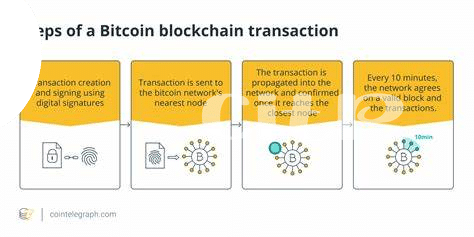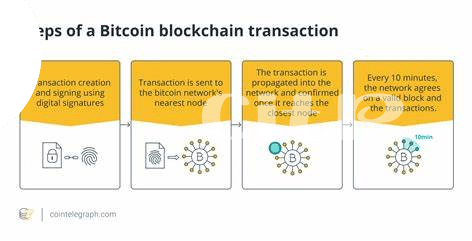Unmasking Bitcoin: the Basics of Anonymity 🎭

Imagine stepping into the world of digital cash, where everyone wears a mask, not to hide their identity completely but to keep their financial dealings private. When we talk about Bitcoin, it’s like entering a vast, bustling marketplace where no one knows your true name. You hand over a digital coin, receive goods or services, and walk away, all without revealing who you are. This level of discretion is what draws people to Bitcoin. It’s not about being invisible; it’s about choosing when and where to show your face, or in Bitcoin’s language, your transaction history.
| Feature | Description |
|---|---|
| Bitcoin Anonymity | Similar to wearing a mask in a crowded place, allowing individuals to engage in transactions without revealing their true identity. |
| Use Case | Perfect for those wishing to protect their financial privacy, akin to buying a gift anonymously for a surprise party. |
However, this sense of anonymity can be a bit of a magic trick. While it might seem like you’re completely hidden, there are ways to trace transactions back to people if someone knows where to look. This doesn’t mean privacy is an illusion, but it’s not absolute. It’s more like wearing a disguise at a masquerade ball; with enough clues, someone can figure out who’s behind the mask. That’s the delicate dance of Bitcoin’s anonymity—part of its charm, but also a challenge for those seeking total privacy in their digital dealings.
Crafting a Secret Identity with Pseudonyms 🕵️
Imagine you’re playing a game where everyone wears masks and you choose a fun nickname for yourself. In the world of Bitcoin, it’s kind of like that when it comes to protecting your identity. People use pseudonyms, which are like secret code names, not their real names. This is a clever way to keep personal information away from prying eyes. But here’s where it gets interesting, just as in games where certain clues can give away who’s behind the mask, every transaction you make with Bitcoin leaves digital breadcrumbs. These breadcrumbs can sometimes lead back to you, especially if you’re not careful about how you move your digital coins around. It’s a bit like playing hide and seek, where you must be smart to stay hidden. For more insights on how to keep your Bitcoin transactions secure and private, especially understanding the nitty-gritty of the legalities involved, check out this must-read at https://wikicrypto.news/navigating-the-legal-landscape-of-bitcoin-mining-worldwide. It’s like having a map that helps you navigate through a forest of potential risks, ensuring that you can enjoy the game of Bitcoin while staying under the radar.
How Bitcoin Mixes up Transaction Trails 🌀

Imagine you’re trying to throw someone off your trail in a game of hide and seek. You might zigzag, double back, or even disguise your tracks. This is similar to what happens in the world of Bitcoin when someone wants to keep their transaction paths mixed up. It’s like using a magic wand to blur the lines of who sent what to whom. This magic trick is done through a nifty process called mixing or tumbling, where a service jumbles up a bunch of transactions together. It’s as if you put different colored marbles into a bag, shook it up, and then handed out marbles again. Everyone ends up with a marble, but it’s nearly impossible to say which marble came from whom.
This clever tactic adds layers of privacy, making it a tough puzzle for anyone trying to trace the transaction back to its source. But it’s not just about playing a game of digital hide and seek 🚀. It’s about protecting your financial privacy in a world that’s increasingly online. After all, in the vast ocean of digital transactions, who doesn’t want their little fish to swim undetected? However, it’s vital to navigate these waters carefully. While mixing might sound like a superhero’s cloak of invisibility 🦸♂️, it’s crucial to remember that the effectiveness of these methods can vary, and there are always eyes trying to decode the magic spell.
The Toolbox for Privacy: Bitcoin’s Secrets Unveiled 🔐

When it comes to keeping your Bitcoin transactions private, think of it like having a magic toolbox. Inside this toolbox, you find all sorts of clever tricks and tools designed to keep your financial business just between you and where you’re sending your money. One of these tools is something called a ‘wallet’ – but not like the one in your pocket. This digital wallet has a very special feature: it doesn’t have to show your real name. Instead, you can use what’s called a ‘pseudonym’ – basically, a made-up name that represents you without giving away who you really are. 🕵️🔑
But wait, there’s more! If you’re really into keeping things hush-hush, there are also services that mix up your Bitcoin with others’. Think of it as throwing your own piece into a big pot of soup with everyone else’s and stirring it all around. This makes it super tricky for anyone trying to peek into what you’re buying or selling to figure out it’s you. Want to dive even deeper into this world of Bitcoin and how it works? You might find reading how to sell bitcoin and the blockchain useful. 🌀🔐 It’s like getting a backstage pass into the world of digital currency, where understanding the mix of privacy tools at your disposal can make all the difference.
Staying Undercover: the Limits of Bitcoin Anonymity 🚧
Imagine you’ve got a superhero’s cloak that makes you invisible online, especially in the world of Bitcoin transactions. You feel invincible, moving money without anyone knowing it’s you. But, as in all great stories, even superheroes have their weaknesses. For Bitcoin users, complete invisibility, or what we often think of as total anonymity, has its kinks. Sure, the cloak is fabulous, but it isn’t perfect. Think of Bitcoin’s system as a bustling marketplace. Whilst you can use a disguise, if someone watches long enough, they might start to notice patterns – like how you always visit the same stall or use the same path. That’s because, in the grand ledger that records all Bitcoin transactions, your secret identity (your pseudonym) leaves traces every time you make a move.
Here’s a simple way to look at it:
| Feature | Description |
|---|---|
| Bitcoin Anonymity | More like invisibility with a semi-transparent cloak. Your transactions aren’t tied to personal info directly but can be traced back with effort and tools. |
| Pseudonyms in use | Your secret identity, or Bitcoin address, can start revealing patterns over time, making your activities more visible to the keen observer. |
| Observation and Analysis | Just like noticing someone’s habits, skilled individuals or entities can analyze transaction patterns, potentially piercing the veil of anonymity. |
Even though advanced tools and strategies aim to thicken the fog around our financial moves in the cryptoworld, they offer a cocktail of privacy rather than a bulletproof solution. Plus, with governments and regulators developing a sharp eye for these details, the challenge of staying completely undercover in the Bitcoin realm reminds us of the cat-and-mouse games from our favorite spy movies.
Legal Lens: Navigating the Rules of Concealment 📜

When it comes to Bitcoin, staying hidden isn’t just about keeping secrets; it’s also about playing by the rules. Imagine you’re in a giant game of hide and seek, but this game is monitored by referees who make sure everyone plays fair. These referees are the laws and regulations that govern how Bitcoin can be used. Now, navigating these rules can be tricky. Some rules are clear – like not using Bitcoin for bad stuff. But others? They’re like invisible tripwires that could get you in trouble if you’re not careful. That’s why understanding the legal side of hiding (or not hiding) your Bitcoin transactions is super important. Whether you’re just using Bitcoin to buy something without flashing your real name, or diving deeper into the world where transactions become puzzles, knowing the rules can keep you safe. And if you’re curious about diving deeper into the world of Bitcoin, from its mysteries to its mechanics, check out this guide on how to mine bitcoin and the blockchain. It’s your flashlight in the dim world of digital currency, helping you navigate the caves of concealment without bumping into legal walls.
